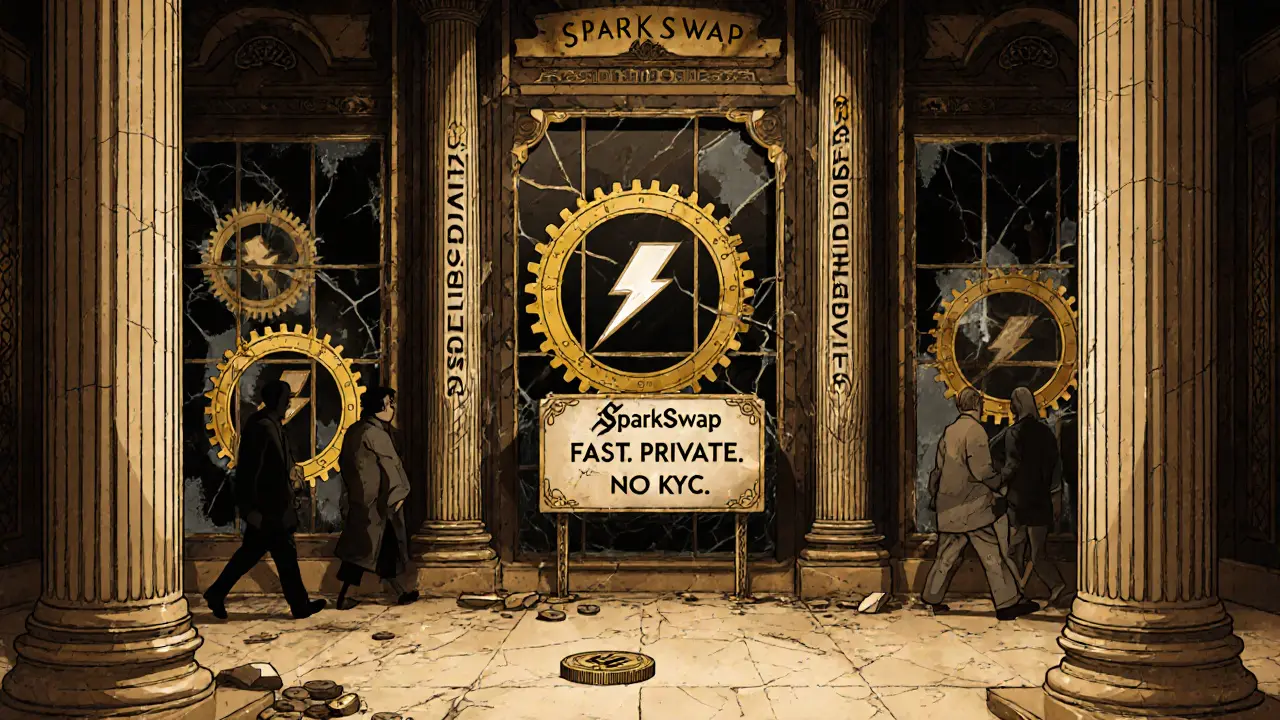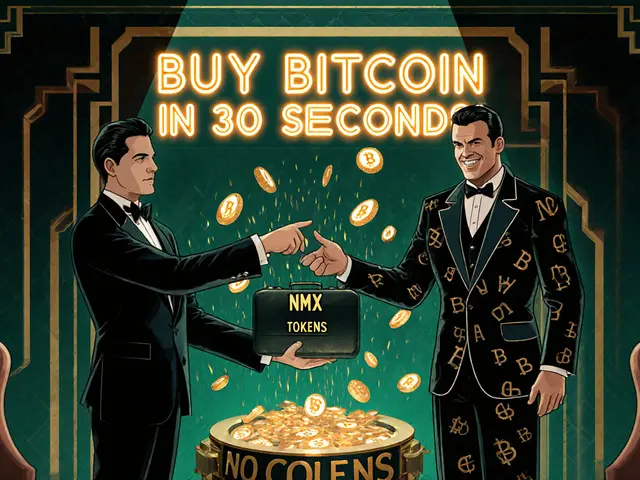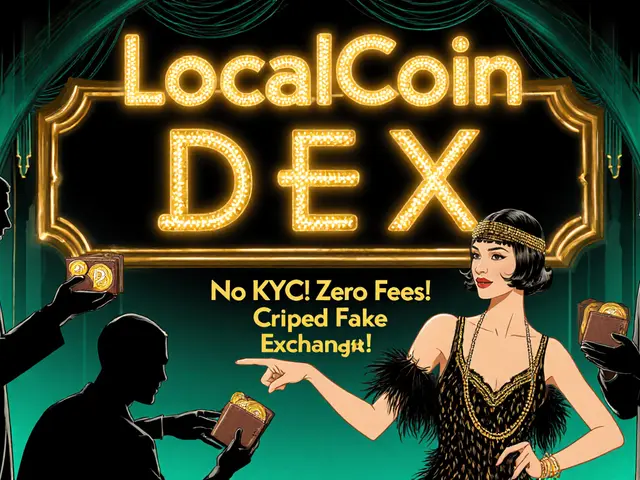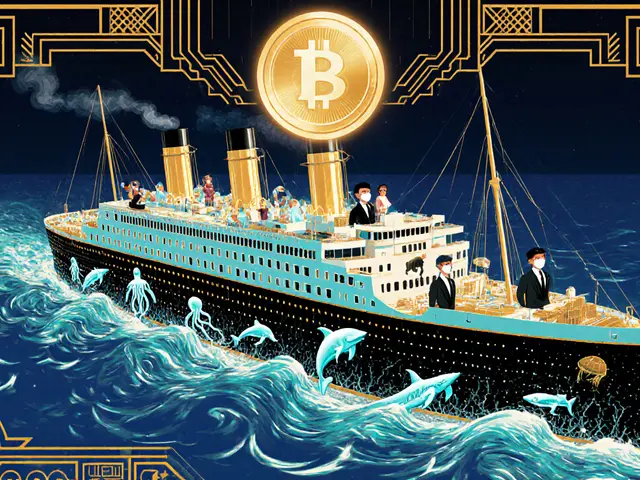SparkSwap Project Verifier
Verify Your SparkSwap Project
This tool helps you determine if a SparkSwap project is legitimate by checking key indicators like blockchain activity, team updates, and volume data.
Enter a SparkSwap URL or contract address to verify its legitimacy
This tool checks for active blockchain presence, team activity, and trading volume data
There are three different projects all called SparkSwap - and only one of them still exists. If you’re searching for a crypto exchange named SparkSwap, you’re walking into a mess of dead platforms, confusing names, and misleading search results. Most people don’t realize they’re looking at a project that shut down over two years ago. Let’s clear up the confusion and tell you exactly what’s real, what’s dead, and what might still be worth your time.
The Original Sparkswap Is Dead
The first Sparkswap - the one that got real attention in 2022 - was a decentralized exchange that let you trade Bitcoin using the Lightning Network and even deposit fiat money through AnchorUSD. It sounded promising: fast, private, no KYC for crypto trades, and a clean interface. But by March 24, 2023, it was gone. The founder, Trey Griffith, openly admitted they didn’t have enough users to stay alive. He said the self-custody model was too niche. People liked the idea, but not enough to actually use it regularly.They didn’t go out with a bang. They just… stopped. Lightning nodes shut down. Fiat deposits were frozen. The website went dark. Today, if you search for Sparkswap, you’ll find archived pages from 2022 showing a platform that once had 12 reviews on Trustpilot. Users praised the Lightning integration but complained about low liquidity. One user said they couldn’t trade more than $500 without facing 15% slippage. That’s not a dealbreaker for small trades, but it kills any serious trading volume.
Why did it fail? Simple: it tried to be both a decentralized exchange and a fiat gateway. That’s expensive. It had to deal with banking regulations, compliance, and infrastructure costs - all while competing against Coinbase Wallet Swap, which moved $14.7 billion in Q1 2023. Sparkswap had maybe $50,000 in daily volume. The math didn’t work.
SparkSwap (BSC) - A Quiet, Untracked DEX
Then there’s SparkSwap on Binance Smart Chain. It’s run by SparkPoint Technologies, based in the Philippines. Launched in October 2021, it lets you trade SRK (their native token), SFUEL, BNB, and other BEP-20 tokens. Sounds fine, right? Except CoinMarketCap lists it as an “Untracked Listing.” That means there’s no verified trading volume. No data. No transparency.Its website, srk.finance, hasn’t been updated since January 2023. Their GitHub repo hasn’t had a commit since November 2022. There are only seven reviews on CryptoSlate, averaging 2.8 out of 5. Users report transaction failures, high slippage, and a sluggish interface. One trader said they tried swapping 0.5 BNB to SRK three times before it went through - and even then, they lost 15% to slippage.
This isn’t a rogue platform. It’s just inactive. There’s no marketing, no development, no community buzz. It’s stuck in limbo. If you’re looking for a DEX on BSC, you’ve got PancakeSwap with 1.8 million daily users, BakerySwap, and MDEX. Why risk your funds on a ghost project with no volume and no updates?
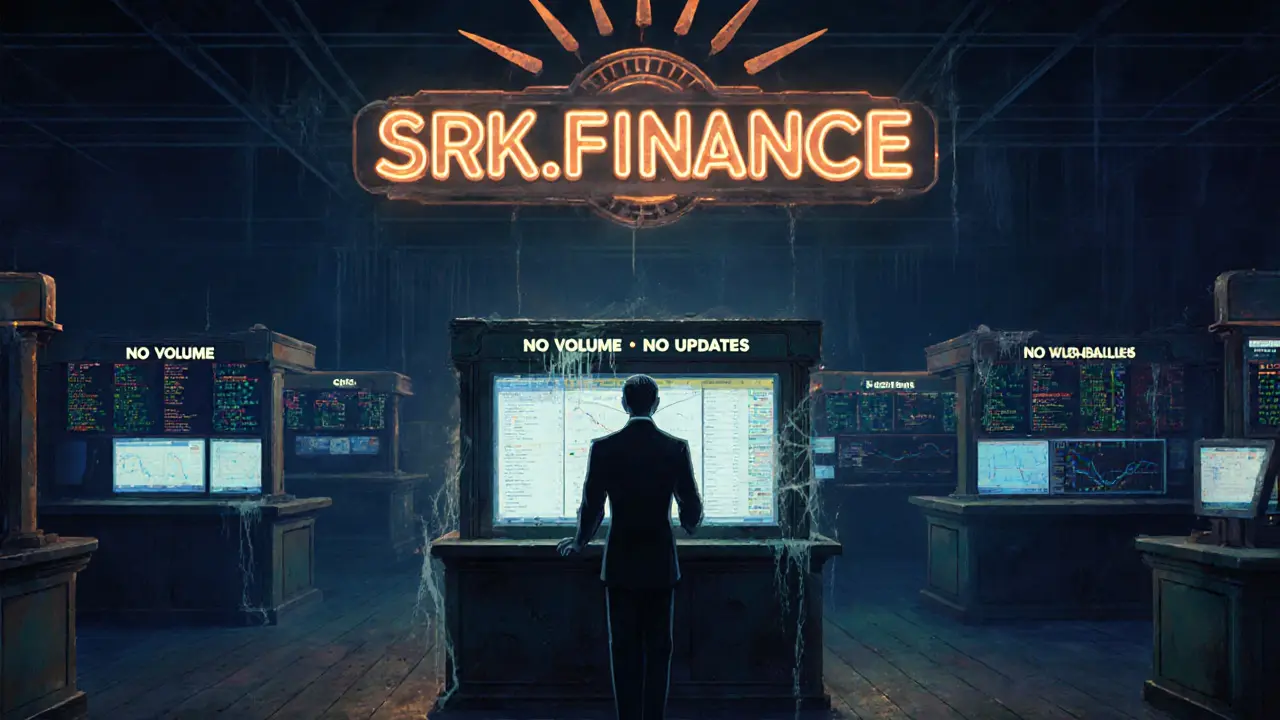
SparkSwap on PulseChain - The Only Active One
Now, here’s the one you might actually want to look at: SparkSwap on PulseChain. It’s not a DEX. It’s a yield farming protocol. Think of it like a high-yield savings account for crypto - but built on PulseChain, a blockchain that’s a fork of Ethereum with near-zero gas fees.This version of SparkSwap offers farming pools, mostly for stablecoins like USDC and DAI. In mid-2023, users were earning up to 53% APR on these pools - and crucially, there’s no impermanent loss because you’re swapping between two stablecoins that don’t fluctuate in price. That’s rare. Most DeFi farms lose money when token prices swing. This one doesn’t.
It’s not perfect. There’s a 2% withdrawal fee on rewards. If you’re compounding daily, that eats into your profits. You also need to bridge your assets from Ethereum or BSC to PulseChain first. That costs $5-$15 and takes 15-45 minutes. But once you’re in, the interface is clean. Setting up a farm takes under 10 minutes.
There’s active development here. GitHub shows 14 commits in the last 30 days as of August 2023. The team announced a V2 upgrade with concentrated liquidity pools coming in Q4 2023. The PulseChain ecosystem has about 147,000 daily active users and a TVL of $142 million - small compared to Ethereum’s $38 billion, but growing. The community is engaged. Reddit threads in r/PulseChain are full of people sharing farming strategies and reward updates.
Why Naming Confusion Is Dangerous in Crypto
This isn’t just a case of bad branding. It’s a warning. In crypto, names matter. If you Google “SparkSwap,” you’ll see results for all three projects mixed together. One is dead. One is dormant. One is active - but only if you know exactly where to look.People lose money because they think they’re using the original Sparkswap. They deposit funds into a site that no longer exists. Or they try to trade on the BSC version, not realizing it’s abandoned. The PulseChain version is legit - but it’s not a traditional exchange. It’s a yield farm. If you want to trade ETH for SOL, this isn’t the place.
There’s a lesson here: never trust a name alone. Always check the blockchain, the team, the updates, and the volume. A project can look identical on the surface but be completely different underneath.
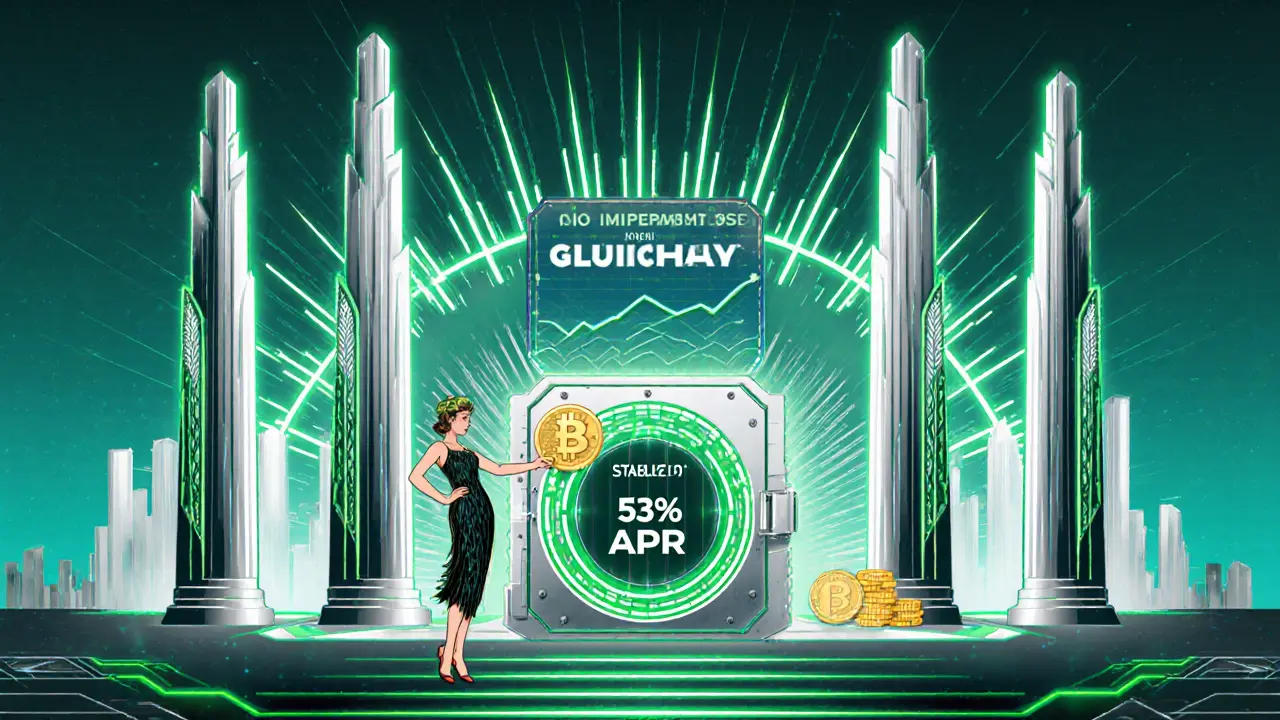
What Should You Do Right Now?
- If you’re looking to trade crypto: Skip SparkSwap entirely. Use Uniswap, PancakeSwap, or a centralized exchange like Kraken or Binance. They have liquidity, support, and security.
- If you’re chasing high yields: Only consider SparkSwap on PulseChain - but understand the risks. PulseChain is a small chain. It’s not as secure as Ethereum. If the network gets hacked or abandoned, your funds could vanish. Only stake what you can afford to lose.
- If you’re holding SRK or SRKb tokens: You’re holding a dead asset. The BSC version has no trading volume. There’s no way to sell it without finding a private buyer.
- If you’re trying to recover funds from the original Sparkswap: Too late. The company shut down. AnchorUSD returned fiat deposits, but crypto holdings were lost. No refunds. No recovery.
Final Reality Check
The crypto space is full of projects that sound amazing on paper - but die because no one uses them. Sparkswap (original) died because it was too complex. SparkSwap (BSC) died because no one cared. SparkSwap (PulseChain) survives because it solves a real problem: high-yield, low-risk farming in a low-fee ecosystem.Don’t be fooled by the name. Don’t assume all SparkSwaps are the same. The only one still alive isn’t even a crypto exchange - it’s a yield farm. And even then, it’s a high-risk bet on a small chain.
If you want safety, go with the big players. If you want yield, understand the trade-offs. And always, always check the blockchain, the team, and the last update date - not just the website’s logo.
Is SparkSwap still operating as a crypto exchange?
No, the original Sparkswap exchange shut down permanently on March 24, 2023. The Binance Smart Chain version (SparkSwap BSC) is inactive with no recent updates or trading volume. Only SparkSwap on PulseChain is still active - but it’s a yield farming protocol, not a trading platform.
Can I still trade Bitcoin on SparkSwap using Lightning?
No. The Lightning Network nodes for the original Sparkswap were shut down in March 2023. All trading and withdrawal functions were discontinued. There is no way to access those services anymore.
Is SparkSwap on PulseChain safe?
It’s safer than the defunct versions, but still high-risk. PulseChain is a smaller, less-tested blockchain with a TVL of only $142 million. While the SparkSwap yield pools offer 53% APR with no impermanent loss on stablecoins, the entire ecosystem depends on PulseChain’s survival. If the chain loses support, your funds could be lost. Only use money you can afford to lose.
Why does SparkSwap have so many versions?
Crypto projects often reuse popular names to gain attention. Sparkswap (original) was a well-known brand. After it shut down, other teams used the same name for new projects on different chains - BSC and PulseChain - hoping users would confuse them. This is common in crypto, but it’s dangerous for users who don’t verify the exact contract address and blockchain.
What happened to the SRK token?
The SRK token, tied to SparkSwap on BSC, has no trading volume and no active development. Its price is effectively zero. There’s no exchange listing it, and no team pushing its use. Holding SRK means holding an abandoned asset with no utility or exit path.
Can I recover my funds if I used the original Sparkswap?
Only fiat deposits made through AnchorUSD were refunded. All cryptocurrency holdings were lost when the platform shut down. There is no recovery process, no customer support, and no legal recourse. This is why self-custody carries risk - if the platform disappears, your coins disappear with it.
What’s the difference between SparkSwap and Spark (SPK)?
Spark (SPK) is a completely different project - a governance token for a DeFi protocol called SparkPoint. It’s not related to any version of SparkSwap. Many people confuse the two because of similar names, but they have different contracts, teams, and use cases. Always check the token symbol and contract address before interacting.
